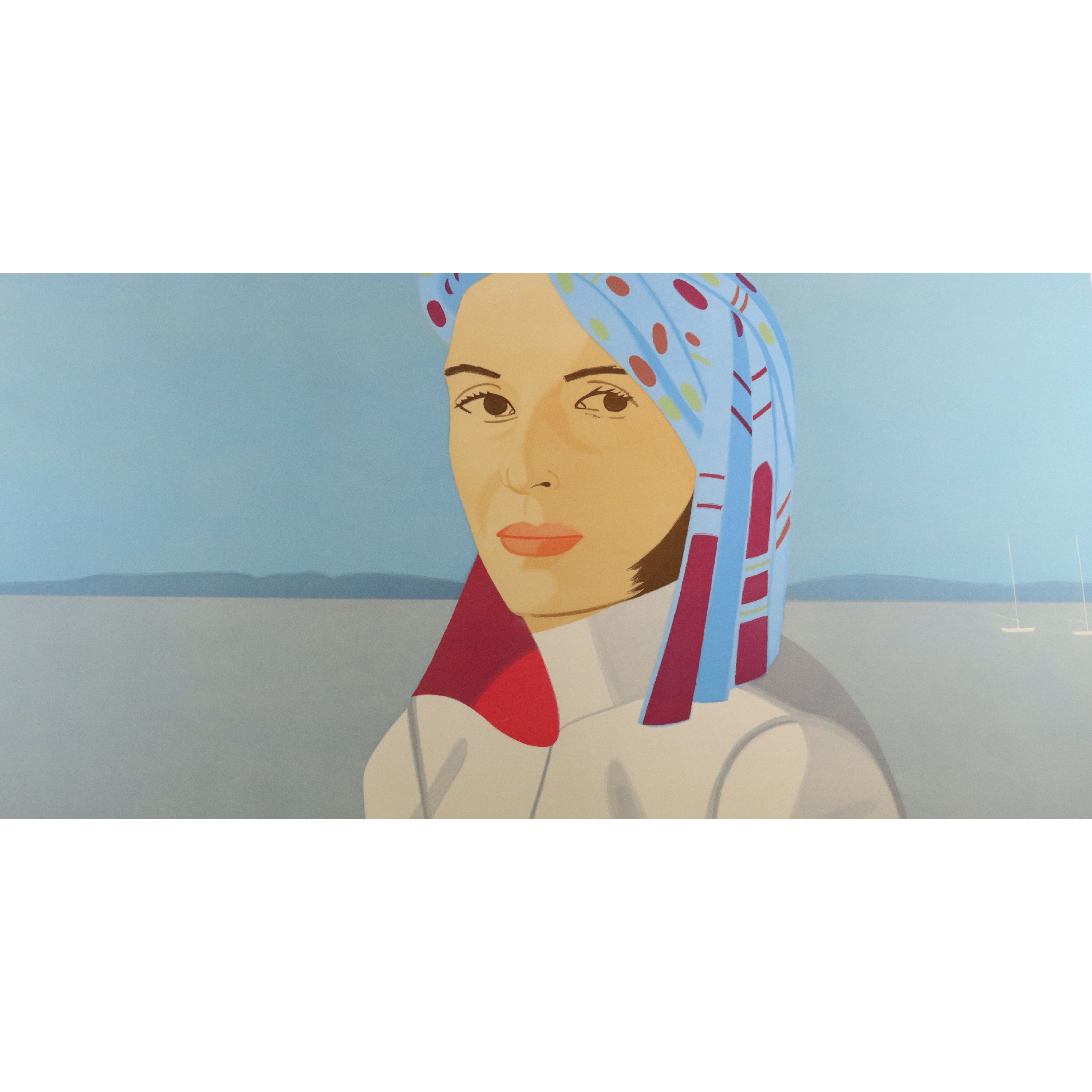
Alex Katz's Blue Hat (2004) is a perfect example of his unique style, which has had a lasting impact on contemporary figurative art. The picture, viewed up close like a cinematic snapshot, draws us into an intimate connection with the figure. Katz intentionally avoids traditional techniques like texture or perspective, choosing instead to focus on flatness and colour to convey meaning.
For him, colour is a way to express emotion, and he felt that to truly experience the vibrancy of these hues, everything that isn't colour had to be toned down. In the painting, for instance, two sailboats are barely noticeable on the horizon, and the only real decoration is the woman’s headscarf.
The portrayed woman is Katz’s wife, Ada, who has appeared in many of his works over the years. The simplicity of the composition brings about a sense of fleetingness, almost like a bittersweet memory — a story that feels just beyond our reach. This feeling is reinforced by Ada's uncertain expression, which feels both mysterious and intriguing. She gazes toward something behind the viewer, making us wonder what she’s looking at. Katz strikes a perfect balance here, creating a sense of realism while deliberately leaving out anything that could offer easy answers.
What we’re left with is a feeling of mystery, with the figures caught between revealing and hiding their true selves.
“ When I do people, they’re supposed to be a specific person, and that’s where it separates from Picasso and Matisse. They use a more generalized form. But then since they are symbols, they shift. It becomes Ada, then it becomes ‘beautiful girl’. And then it becomes something else. With all of it, it’s symbols. „
